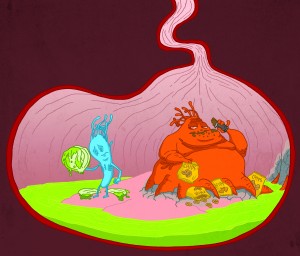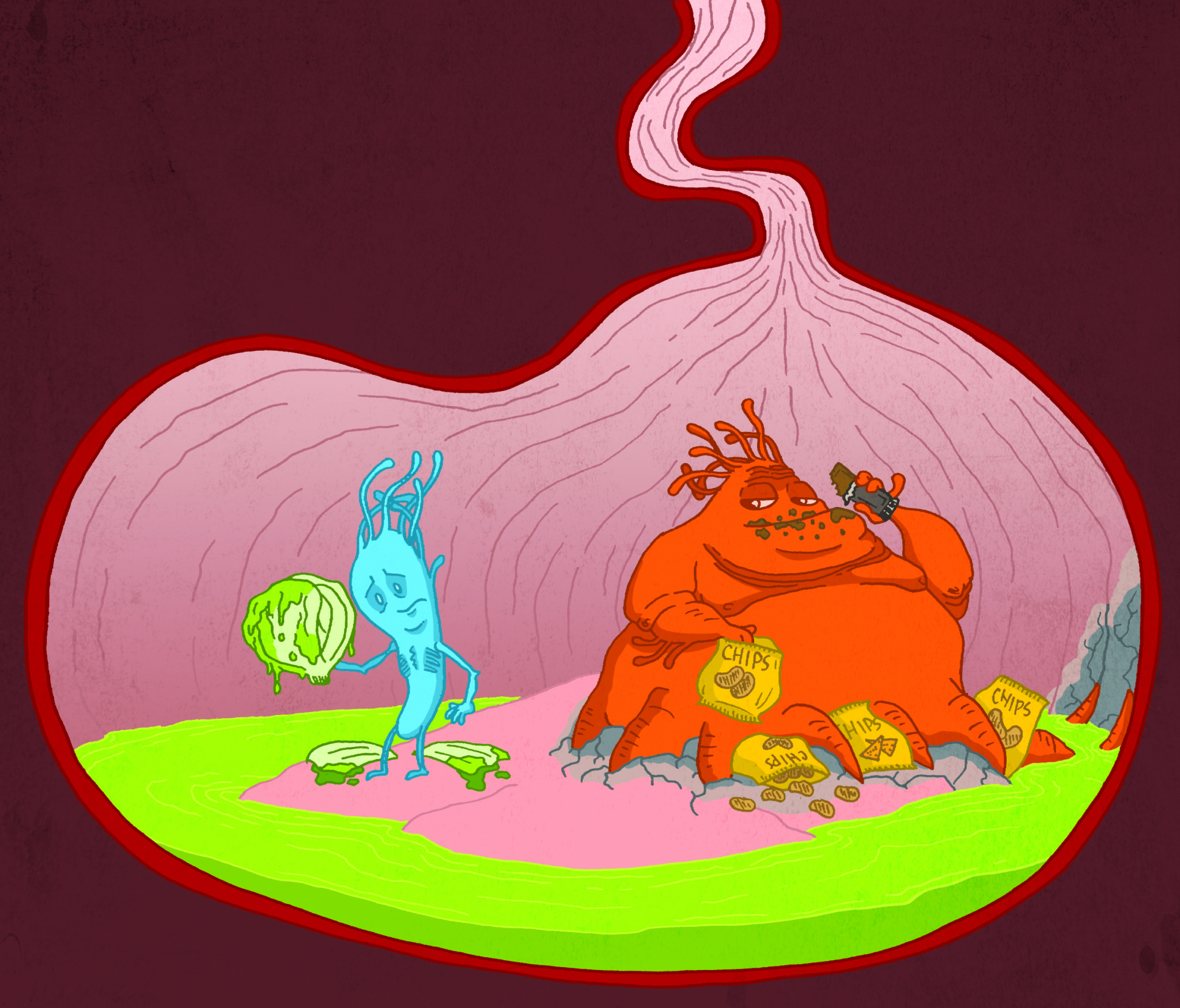
How to Starve Your Bad Gut Flora and Feed the Good for Better Health
Beauty salons are true educational institutions. Every time I have my hair done, I learn something new. This time it was GAPS (Gut and Psychology Syndrome). Not many of us know this syndrome, but we all are very familiar with feeling sluggish and with a mental fog that makes us lose focus and forget where we left our car keys.
So what is GAPS? Simply, it is an imbalance in our gut’s microflora that makes us incapable of digesting food, especially complex sugars and carbohydrates. Undigested food becomes nourishment for bad microbes that already exist in our bodies. Overuse of antibiotics, stress, our modern fast food diet, excessive alcohol, as well as ingesting various toxins contribute to this imbalance. The bad microbes, of which there are over 500, then flourish and can cause numerous health issues. Candida is a common microorganism. It is a fungus that naturally inhabits our bodies.
Candida, along with other potentially harmful microorganisms, exist in balance with beneficial bacteria. However, when good bacteria are diminished, candida transforms from its harmless, one-cell state into an invasive, active state where it grows long hyphae (fungal filaments) and puts “roots” through tissues. This growth can happen not only in the digestive system but also in other internal organs. Candida then produces toxic substances. Many degenerative disorders, from arthritis and digestive problems to MS, chronic fatigue syndrome, fibromyalgia, and even cancer, have been related to candida overgrowth.
Using expensive candida cleanses will not solve the problem permanently. Candida is not the only bad microbe in our digestive system. For a permanent cure, we need to understand how our digestive system works.
The absorption of digested food happens in the small intestine. In order to increase the absorptive surface, the intestinal wall has small finger-like protrusions or villi. The villi are lined by cells called enterocytes that absorb food and pass it into our bloodstream as nourishment for our bodies. Enterocytes have a finite life cycle: they perform their task, they die, and they get renewed. This lifecycle and constant renewal of enterocytes is ruled by beneficial bacteria that lives on them. When the beneficial bacteria is absent this lifecycle gets out of order. When enterocytes cannot perform their task of proper food digestion and absorption, some of them may turn cancerous.
If one is unfortunate enough to have this problem, it is essential to repopulate the good bacteria and to heal damaged enterocytes. Good bacteria can be repopulated by taking probiotics. Now this can get tricky. There is a whole range of probiotics on the market ranging from $20 to $100. Which probiotic to choose takes an informed decision. In addition, some foods contain probiotics, for example, cultured milk products such as kefir and unsweetened yogurt.
Foods that are easily digested don’t put extra workload on sick, deformed enterocytes. That means no carbohydrates, no sugar, and no starch. Why is that? Because large molecules are hard to digest, the enterocytes would have to work hard to break them up. Simple sugars are easy to digest and are contained in ripe fruits and vegetables, honey, and soured milk products. A balanced diet should include simple sugars and avoid any sort of starches and sugary foods that can stay undigested and feed bad bacteria. Interestingly, proteins and fats are also easy to digest. Moreover, processed foods, even if they have all kinds of healthy labels on them and are recommended by Dr. Oz and Oprah should be avoided.
If one has digestion problems it’s better to choose butter over low-calorie margarine, grass-fed beef steak over tofu, and stay away (for a while) not only from pasta and bread but also wild rice, quinoa, sweet potatoes, and any kind of breakfast cereals. I said for a while because there is some good news: once the enterocytes are healed, carbohydrates and sugars may be eaten in moderation without having an adverse reaction.
If you want to get to the bottom of your food intolerances and learn more about GAPS diet, I suggest an excellent book by Dr. Natasha Cambell-McBride called Natural Treatment for GAPS, Gut and Psychology Syndrome. Go here to find out more: http://gaps diet.com.






